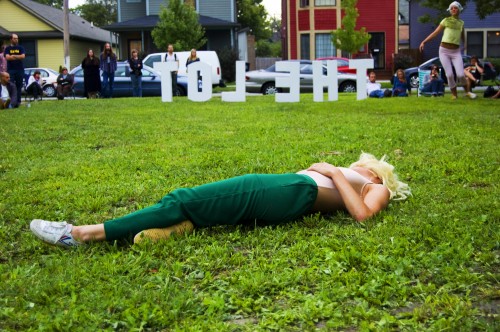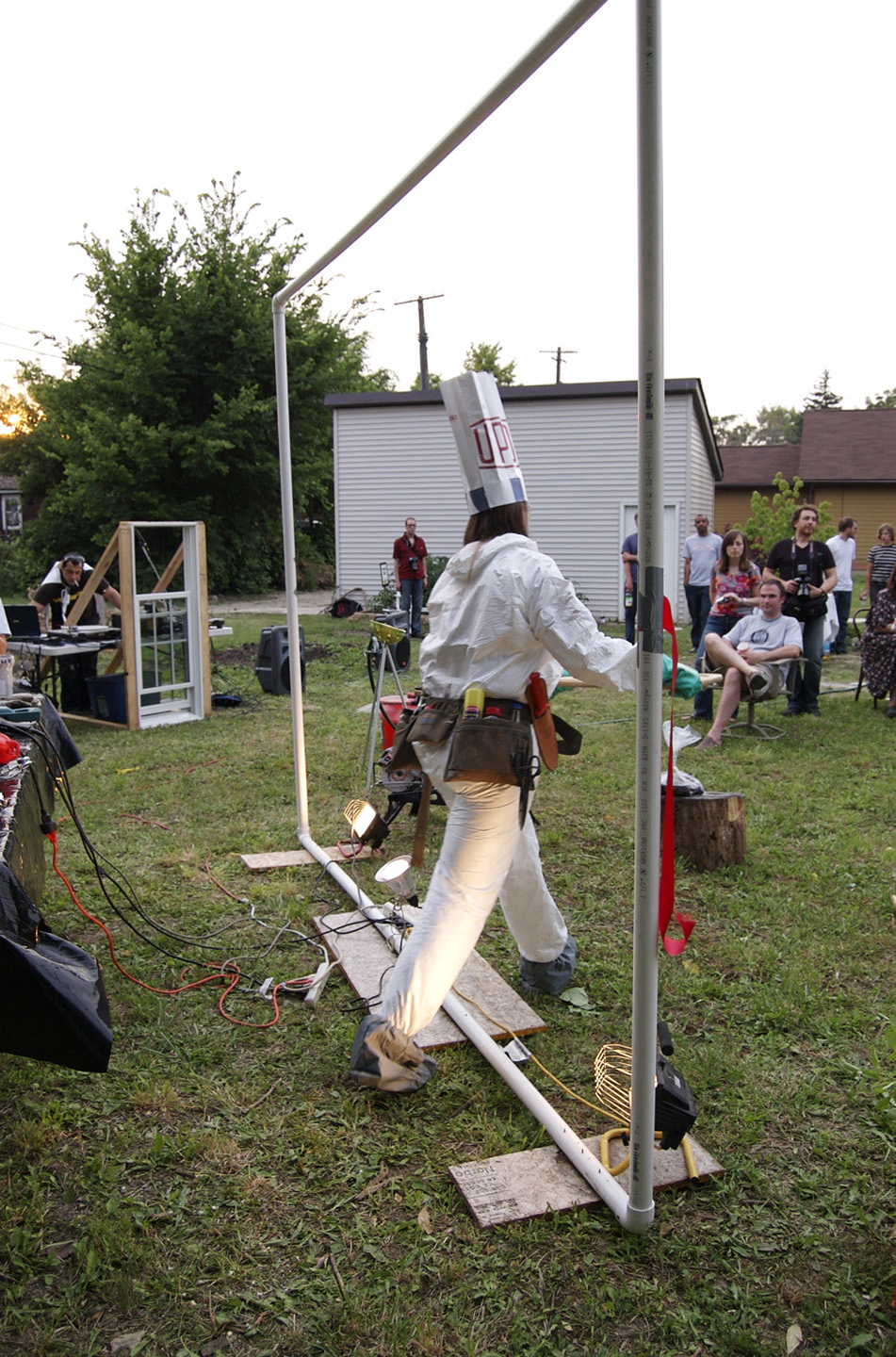
The Lot is an open-air collaborative performance space in the Detroit neighborhood of Corktown. Photo courtesy Kathy Leisen.
The Lot is a curatorial project that began in 2009 with the goal to provide space for site-responsive performance art while pushing the boundaries of what non-commissioned public art in the city would look like. The project, curated by Kathy Leisen, placed an emphasis on artistic collaboration and gave impetus to empty spaces in Detroit. As Leisen noted, and anyone who is familiar with Detroit can affirm, the city is full of people and space that, when joined, have the potential to create and affect change.
The inspiration for The Lot came from the OxBow School of Art and Artist Residencies located in Saugatuck, MI, where Leisen worked as a campus administrator. The attitude of the artists she encountered at OxBow and the brevity of site-specific performance art that was being created made the artist and curator ponder what she could do with her community space in Detroit. “Ox-Bow is a very rural art community that encourages site-specific sculpture and projects because of its natural landscape and also because of its “try anything” attitude,” says Leisen. “While there, I witnessed some beautiful pieces, and when I came back to Detroit, I realized that there was no reason why that could not happen here.” After returning to her Corktown neighborhood, Leisen set out to transform the vacant lot adjacent to her Detroit residence into an environmental nexus of local and international talent.
Leisen wanted The Lot to be, in her words, a completely different experience. For each performance, she paired one local artist with a visiting artist, and allowed them to interpret the space however they determined was suitable to their practice.
Prior to realizing the project, Leisen wrote a letter to her neighbors expressing her ideas for the adjacent lot, asking for suggestions and inviting collaboration. She received an overwhelming response to the inquiry and from this, a hybrid site was born. Interested in challenging traditional notions of space, she purposely structured the project into a model that could exist anywhere. The site itself is deliberate yet flexible, which is a methodology apparent to those in Detroit who are spearheading public art projects akin to The Lot.




